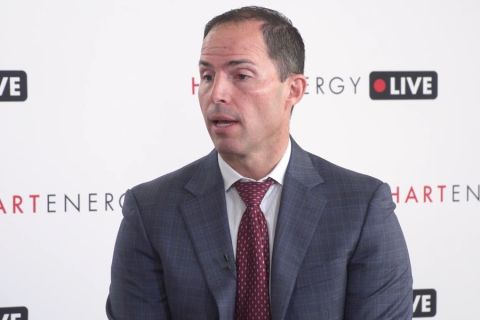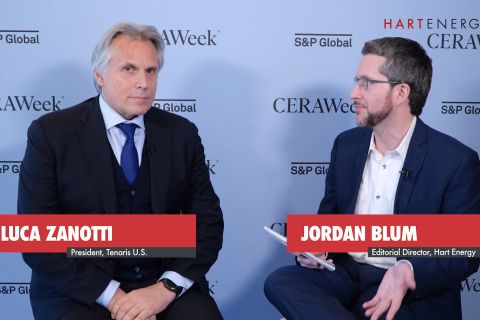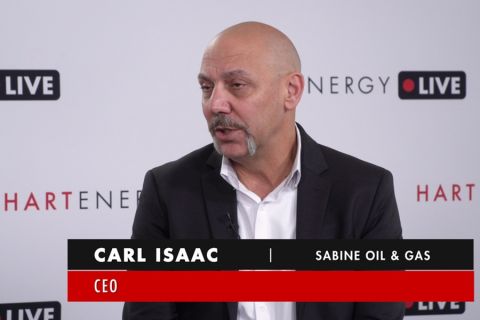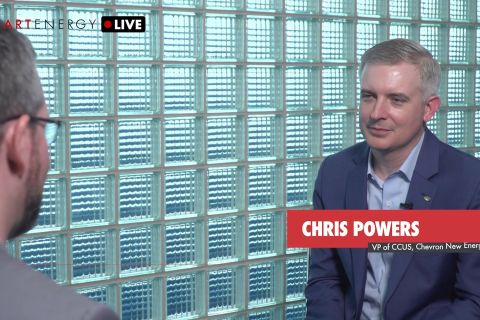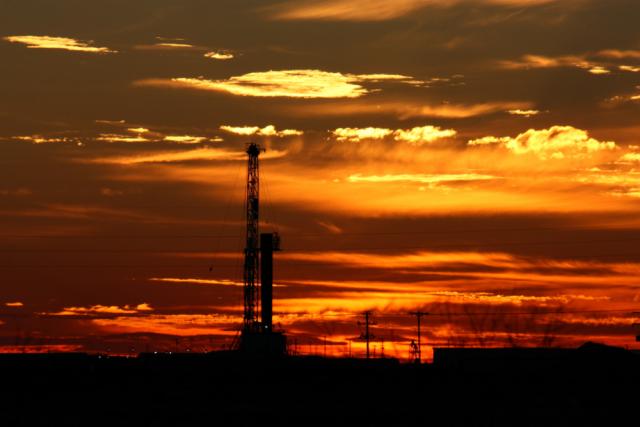
Some Permian Basin operators see natural gas takeaway constraints and inflationary pressure ahead for the basin. (Source: GB Hart/Shutterstock.com)
HOUSTON—With more than 100 billion barrels of recoverable oil in the Permian Basin and recovery rates between 6% and 8%, top executives for three of the biggest oil producers in the basin see plenty of opportunities ahead for the basin.
Conversation about the potential of EOR to tap more barrels and carbon sequestration surfaced when executives from ConocoPhillips, Diamondback Energy and Pioneer Natural Resources took the stage during the 23rd World Petroleum Congress this week.
“We started a large pilot and we’re injecting wet gas as a miscible agent,” to recover more oil, said Pioneer Natural Resources CEO Scott Sheffield. He added that CO2 could work even better. Long-term hopes are to bring “bring CO2 from the Gulf Coast to the Permian Basin and recover another 8% to 10% of the oil out of the rock so we can sequester CO2.”
The shale innovation discussion took place as the energy transition strengthens, investors’ pressure to cut emissions mounts, and market and regulatory conditions—for better or worse—keep oil companies vigilant and nimble in the basin.
“We’ve been left for dead three different times, not just dead but stone-cold dead three times and every single time something has happened that has lifted the Permian Basin from death to the life that we see today,” said Travis Stice, CEO of Midland, Texas-based Diamondback Energy.
He recalled April 20, 2020, when the oil price sank deep into negative territory as the coronavirus raged, crippling demand and slowing drilling activity in an oversupplied market. He also flashed back to 1972 when production in the Permian began to fall for 35 consecutive years until 2008. Horizontal drilling and hydraulic fracturing changed the game. In the years since, tweaked completion recipes, longer laterals and simul-frac among other technologies and techniques have pushed production up to about 5 MMbbl/d today.
Advances in EOR could become the next technology headliner if projects prove successful.
“This industry is full of problem solvers and risk takers,” added Tim Leach, executive vice president, Lower 48, for ConocoPhillips. “I do believe whoever said that at the end of the decade, there’s only going to be three places in the world that matters [for oil production], and this [the Permian] is one of them.”
The executives were confident in the industry’s ability to produce responsibly, while solving other challenges—some of which were addressed.
Inflation Worries: Rystad Energy forecast U.S. shale expenditures could jump 19.4% in 2022 to $83.4 billion, rising from $69.8 billion. Service price inflation alone is expected to add $9.2 billion of the anticipated year-on-year increase, the firm said.
RELATED: US Shale Industry Prepares for More Cost Inflation
Inflationary pressures are already being felt, Stice said; however, he noted the industry has demonstrated for decades its ability to navigate inflation with innovation, capital efficiency and hard work. “I think that’s really important for investors to understand; we’re going to continue this capital efficiency. While inflation will impact your fixed costs—pipe, cement—the variable cost which we control through capital efficiencies is part of our stock-in-trade.”
Water Concerns: Permian producers have been reducing use of freshwater by using effluent water, or municipal wastewater, and recycling as part of water-intensive hydraulic fracturing operations. Sheffield said Pioneer is essentially fracking all of its wells with effluent water in the Permian. The company plans to reduce freshwater use in its completions’ operations to less than 25% by 2026.
However, other issues involving produced water disposal wells have arisen as wells go deeper. “Most of us are reusing our water and we’re starting to see what happened in Oklahoma with minor earthquakes. So, we’re going to the Ellenburger, …[which] is about 13,000,” Sheffield said, after pointing out Delaware and Midland operators had been pressuring up the San Andres Formation. “These earthquakes are occurring at about 25,000-30,000.”
Some of these disposal wells need to be relocated, he added.
Pioneer noted in its latest sustainability report that the West Texas region had experienced an increased frequency of seismic events in 2020. To better understand and manage such risks, the company conducts internal seismicity monitoring through sensors, engages with state regulators and industry groups, and contributes research funding.
Takeaway Constraints: ConocoPhillips and Diamondback also warned of potential natural gas takeaway constraints on the horizon for the Permian.
“There’s plenty [gas takeaway capacity] today, but you can kind of see the day coming where it may get tight,” Leach said, adding it’s within the industry’s control. “Our experience has been that industry has always rushed to supply what the industry needs and tends to overbuilt.”
Stice added that the Permian Basin is in “pretty decent shape on liquid pipelines,” but agreed that more investment is needed for natural gas pipeline within the next year or two.
Among the latest capacity additions enabling shipments to the Gulf Coast and Mexico are Whistler, the 2 Bcf/d Whitewater-operated pipeline connecting Permian production at the Waha hub in West Texas to the Agua Dulce Hub in Southeast Texas; and the Kinder Morgan Inc.-operated Permian Highway Pipeline, a 430-mile, 42-in. pipeline with a 2.1 Bcf/d capacity.
The pipeline additions came as production of natural gas production continues to rise in the Permian.
The U.S. Energy Information Administration forecasts gas production growth of 87 MMcf/d to nearly 19.4 Bcf/d in December.
Recommended Reading
Chesapeake, Awaiting FTC's OK, Plots Southwestern Integration
2024-04-01 - While the Federal Trade Commission reviews Chesapeake Energy's $7.4 billion deal for Southwestern Energy, the two companies are already aligning organizational design, work practices and processes and data infrastructure while waiting for federal approvals, COO Josh Viets told Hart Energy.
Exclusive: Tenaris’ Zanotti: Pipes are a ‘Matter of National Security’
2024-04-12 - COVID-19 showed the world that long supply chains are not reliable, and that if oil is a matter of U.S. national security, then in turn, so is pipe, said Luca Zanotti, U.S. president for steel pipe manufacturer Tenaris at CERAWeek by S&P Global.
Exclusive: Sabine CEO says 'Anything's Possible' on Haynesville M&A
2024-04-09 - Sabine Oil & Gas CEO Carl Isaac said it will be interesting to see what transpires with Chevron’s 72,000-net-acre Haynesville property that the company may sell.
Exclusive: Chevron New Energies' Bayou Bend Strengthens CCUS Growth
2024-02-21 - In this Hart Energy LIVE Exclusive interview, Chris Powers, Chevron New Energies' vice president of CCUS, gives an overview of the company's CCS/CCUS activity and talks about the potential and challenges of it onshore-offshore Bayou Bend project.
Exclusive: As AI Evolves, Energy Evolving With It
2024-02-22 - In this Hart Energy LIVE Exclusive interview, Hart Energy's Jordan Blum asks 4cast's COO Andrew Muñoz about how AI is changing the energy industry—especially in the oilfield.


